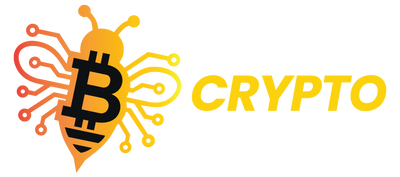Start your crypto journey – safely and smartly
Buying cryptocurrency in Australia is straightforward, but doing it securely takes planning. Most investors start through a crypto exchange – a platform that lets you swap Australian dollars (AUD) for digital assets like Bitcoin or Ethereum.
This guide covers:
- How to choose a safe and reputable exchange.
- The step-by-step process to create an account, verify, deposit funds, and buy.
- Alternatives to direct crypto ownership (ETFs, shares, mining stocks).
- Why Australians are investing in crypto – and what risks to watch for.
Step 1: Choosing a Reputable Exchange
The first (and most important) decision is selecting an exchange. In Australia, you should stick to AUSTRAC-registered exchanges. Registration ensures compliance with anti-money laundering laws and gives you some baseline protections.
Why local exchanges make sense:
- Regulation: Must register with AUSTRAC to operate legally.
- Payment methods: Accept AUD via PayID, bank transfer, card, and sometimes PayPal.
- Security: Local platforms are generally less of a target for large-scale hacks.
- Support: Australian-based customer service during AEST business hours.
Factors to compare:
- Fees: Trading fees, deposit/withdrawal charges, spreads between buy/sell prices.
- Supported cryptocurrencies: Check if they list the coins you want.
- Customer service: Live chat vs. ticketing, hours of operation.
- Security credentials: ISO27001 certification, insurance funds, incident history.
- Funding options: Instant PayID is fastest and cheapest; card payments often incur higher fees.
Before signing up, read our Exchange Reviews to compare the major Australian and international platforms.
Step 2: Create and Verify Your Account
When you sign up, you’ll be asked for personal details (name, email, phone, date of birth). Verification is mandatory under KYC (Know Your Customer) laws.
What to expect:
- Email & mobile verification: Six-digit codes are sent to confirm your details.
- Identity verification: Upload government-issued ID (driver’s licence, passport, or Medicare card).
- Selfie check (sometimes): Some platforms require a live photo to match your ID.
- Processing time: Usually 5–10 minutes. Manual reviews can take up to 24 hours.
Security Check: Before depositing funds, enable two-factor authentication (2FA). A strong, unique password + 2FA is your first defence.


Step 3: Deposit Funds
Once verified, you can fund your account. Most Aussie exchanges support:
- PayID (recommended): Instant, usually free.
- Bank transfer: Free but may take 1–2 business days.
- Debit/credit card: Instant but higher fees (1–3%).
- PayPal (rare): Supported on a few exchanges, but fees vary.
- Field note: POLi payments were common in the past but most exchanges have phased them out.

Step 4: Pick the Cryptocurrency
Here’s where the decision gets tricky:
- Beginner-friendly options: Bitcoin (BTC) and Ethereum (ETH) are widely considered the safest entry points.
- Other choices: Altcoins (alternative cryptocurrencies) may offer innovation but carry higher risk.
Factors to weigh up:
- Team & development activity.
- Historical performance and volatility.
- Real-world use cases and adoption.
Before buying, plan how you’ll store your assets securely. Read our Wallet Reviews for the best hot and cold wallet options.

Step 5: Place Your Order
Navigate to the exchange’s trading page. You’ll see a list of supported cryptocurrencies.
Steps:
- Select the coin you want.
- Enter the amount in AUD (or the coin amount).
- Review the order details, including fees and spreads.
- Confirm the trade.
Within minutes, your new crypto will appear in your exchange account.
Don’t stop here. Exchanges are not secure for long-term storage. Transfer your crypto into a hardware wallet or other secure option.
Learn how in our Wallet Guides
Other Ways Australians Invest in Crypto
Not everyone wants to manage wallets and private keys. Alternatives include:
- Spot ETFs: Since 2024, Bitcoin ETFs (and more recently Ethereum ETFs) let investors buy crypto exposure through the ASX, just like a stock. BlackRock and other institutional funds are leading this space.
- Shares in crypto companies: Examples include Coinbase (COIN), MicroStrategy (MSTR), PayPal (PYPL), and Block (SQ). MicroStrategy alone holds nearly 600,000 BTC as of 2025.
- Crypto-related ETFs: BetaShares’ Crypto Innovators ETF (ASX: CRYP) gives exposure to a basket of blockchain-focused companies.
- Mining companies: International markets list firms like BitFarms, Hut 8, and Cipher Mining.
See our SMSF Guides if you’re exploring crypto exposure through superannuation.
Why Australians Buy Crypto
People invest for different reasons:
- Speculation: Hoping prices rise over time (Bitcoin has risen millions of percent since 2009).
- Inflation hedge: Bitcoin has a capped supply of 21 million coins, unlike the AUD which is inflationary. In high-inflation years, cash in the bank can lose 6–8% purchasing power.
- Technology: Exploring NFTs, gaming, tokenised assets, and the metaverse. BlackRock’s BUIDL fund (tokenised U.S. Treasuries) shows how real-world assets are moving on-chain.
- Passive income: Staking and decentralised finance (DeFi) protocols can offer 4–10% yields, though risks are higher than traditional savings.
Quick Steps Recap
- Pick a reputable AUSTRAC-registered exchange.
- Create and verify your account (KYC).
- Deposit AUD via PayID, bank transfer, or card.
- Choose your cryptocurrency.
- Confirm your order – and move your coins into a secure wallet.
Explore our Exchange Reviews, Wallet Reviews, and SMSF Content for deeper guidance.
Final Buzz
Crypto ownership is a responsibility. Always back up your recovery phrase, test wallet recovery, and keep your assets off exchanges whenever possible.
Stay safe. Stay smart. Be Crypto Safe.
Education is your best defence. Unlock member-only guides, checklists, and tools designed to protect your crypto, stay safe and be compliant.



